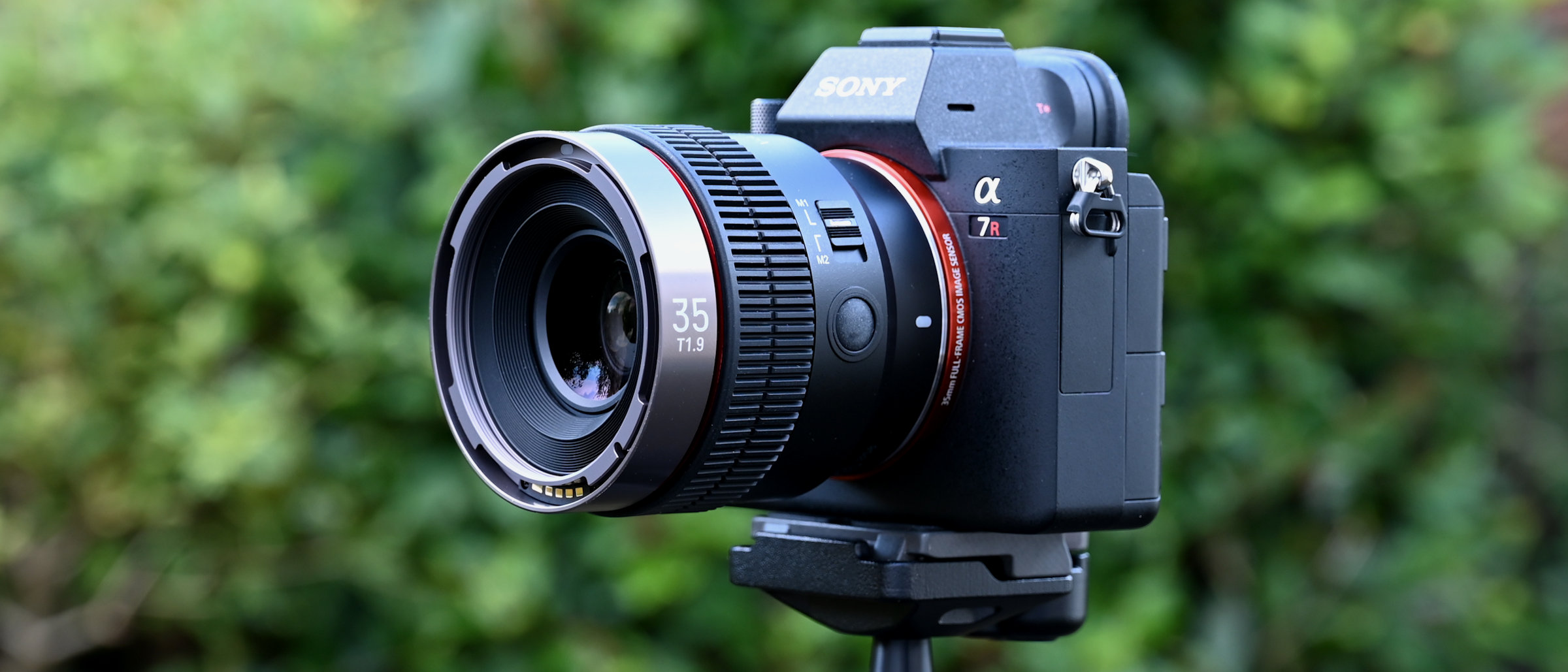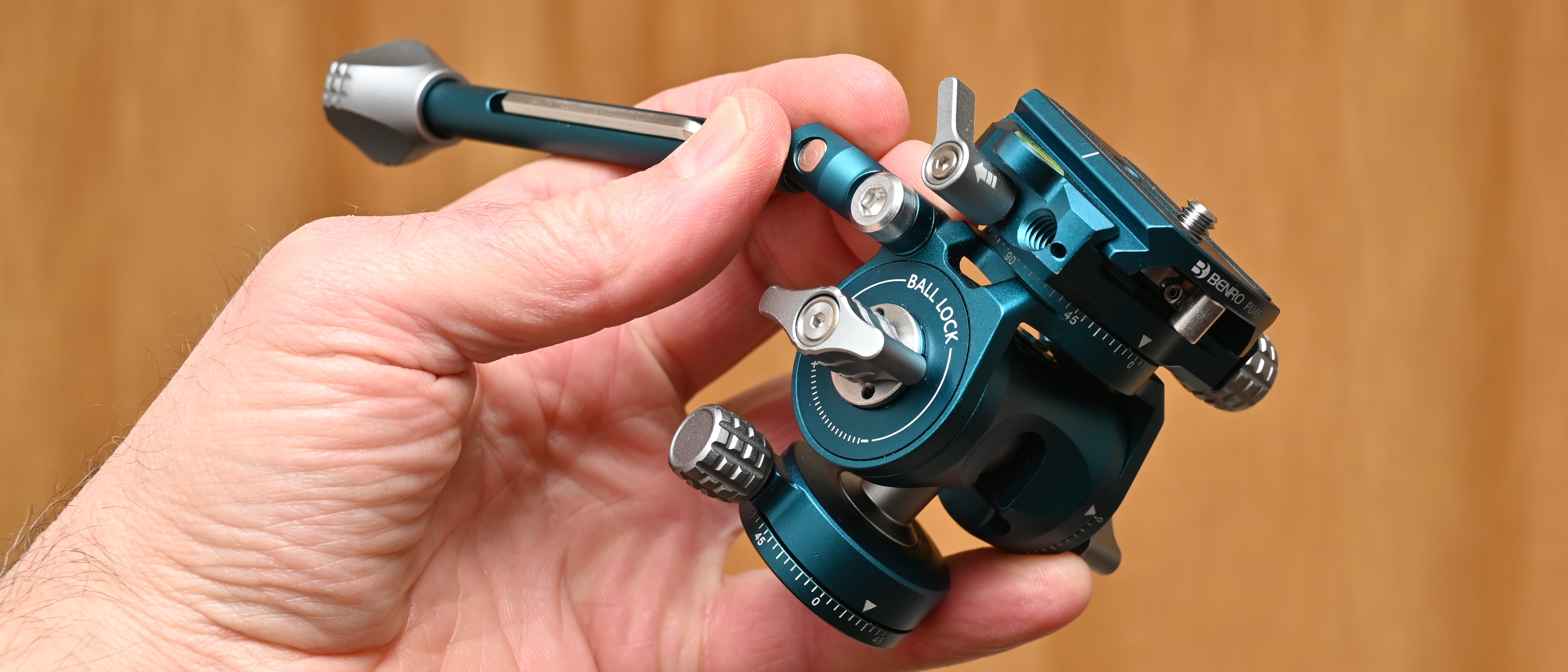Digital Camera World Verdict
Designed for movie-makers, this 35mm lens for Sony E-mount cameras is also plenty sharp enough for high-resolution stills, along with 8K video capture. It’s well-built, boasts some neat features, handles nicely and delivers excellent performance across the board, making it a bargain at the price. There are also 24mm and 75mm T1.9 lenses with identical form-factors already available, plus 20mm and 45mm primes in the pipeline.
Pros
- +
Part of a ‘unified’ Samyang cine range
- +
Customizable function button and mode switch
- +
Tally lights front and side
Cons
- -
Smart accessories not yet available
- -
Slight axial chromatic aberration
Why you can trust Digital Camera World
Wait for an autofocus cine lens for Sony E-mount cameras, and then three come along at once. The Samyang V-AF 35mm T1.9 currently offers the most natural viewing angle of the trio, at 63.6 degrees on full-frame cameras and 43.8 degrees on APS-C bodies, at least when using the whole image sensor in 3:2 aspect ratio. The other two lenses currently available in the V-AF cine line-up are 24mm and 75mm primes, with the same fast T1.9 light transmission rating. All three are sold, as is usual for Samyang, under the Rokinon label in North America.
Read more:
Samyang V-AF 24mm T1.9 review
Samyang V-AF 75mm T1.9 review
Specifications
Mount: Sony E (FE)
Full-frame: Yes
Autofocus: Yes
Stabilization: No
Lens construction: 10 elements in 8 groups
Angle of view (FF / APS-C): 63.6 / 43.8 degrees
Diaphragm blades: 9
Maximum aperture: T1.9
Minimum focusing distance: 0.29m
Maximum magnification ratio: 0.17x
Filter size: 58mm
Dimensions: 72x72mm
Weight: 280g
Key features
The weight of the lens, or rather lack of it, is a key feature if you plan on filming with a drone. It tips the scales at just 280g and, just as importantly, the size, weight and center of gravity is the same for the 24mm and 75mm lenses in the line-up. As well as being drone-friendly, this means that you can swap lenses on the camera without the need to make any gimbal adjustments. The position of the geared manual focus ring is also identical in all three lenses, and Samyang says the same uniformity will apply to the 20mm and 45mm V-AF lenses, due for release later in 2023.
Another common thread is that that the lenses all feature an AF hold button and dual mode switch, the action of both being customizable with Samyang’s optional Lens Station. Likewise, all of the lenses sport two tally lights, one on the side of the barrel and one built into the front. This makes it easy to see when filming is ‘live’, whether you’re shooting or on-camera at the time.
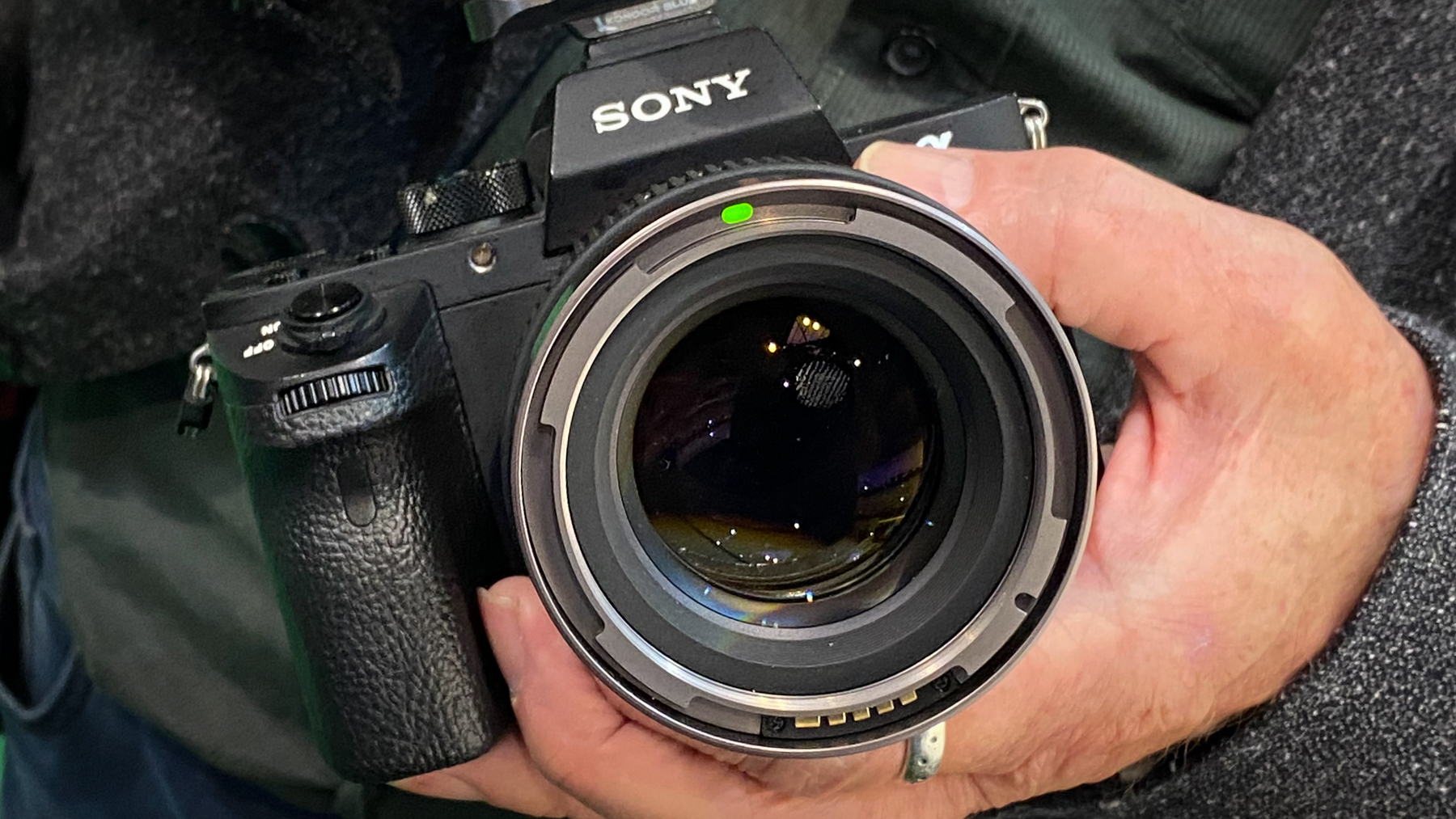
Build and handling
Although it’s a relatively lightweight lens, build quality feels very good and the construction features a full set of weather-seals around the various joints, AF hold button and mode switch. As well as a metal mounting plate at the rear, there’s an additional metal mounting plate with electronic connectors at the front. This will further enhance the handling of the lens by ensuring compatibility with Samyang’s forthcoming smart accessories, although none were yet available at the time of writing this review.
As a ‘V-AF’ lens, the Samyang has a linear stepping motor autofocus system which is typically quick and virtually silent in operation. It’s compatible with Sony’s tricked-up autofocus modes where featured in-camera, as well as ensuring smooth autofocus transitions during movie capture. For good old manual focusing, the geared manual focus ring has a linear action and 300 degrees of rotation by default.
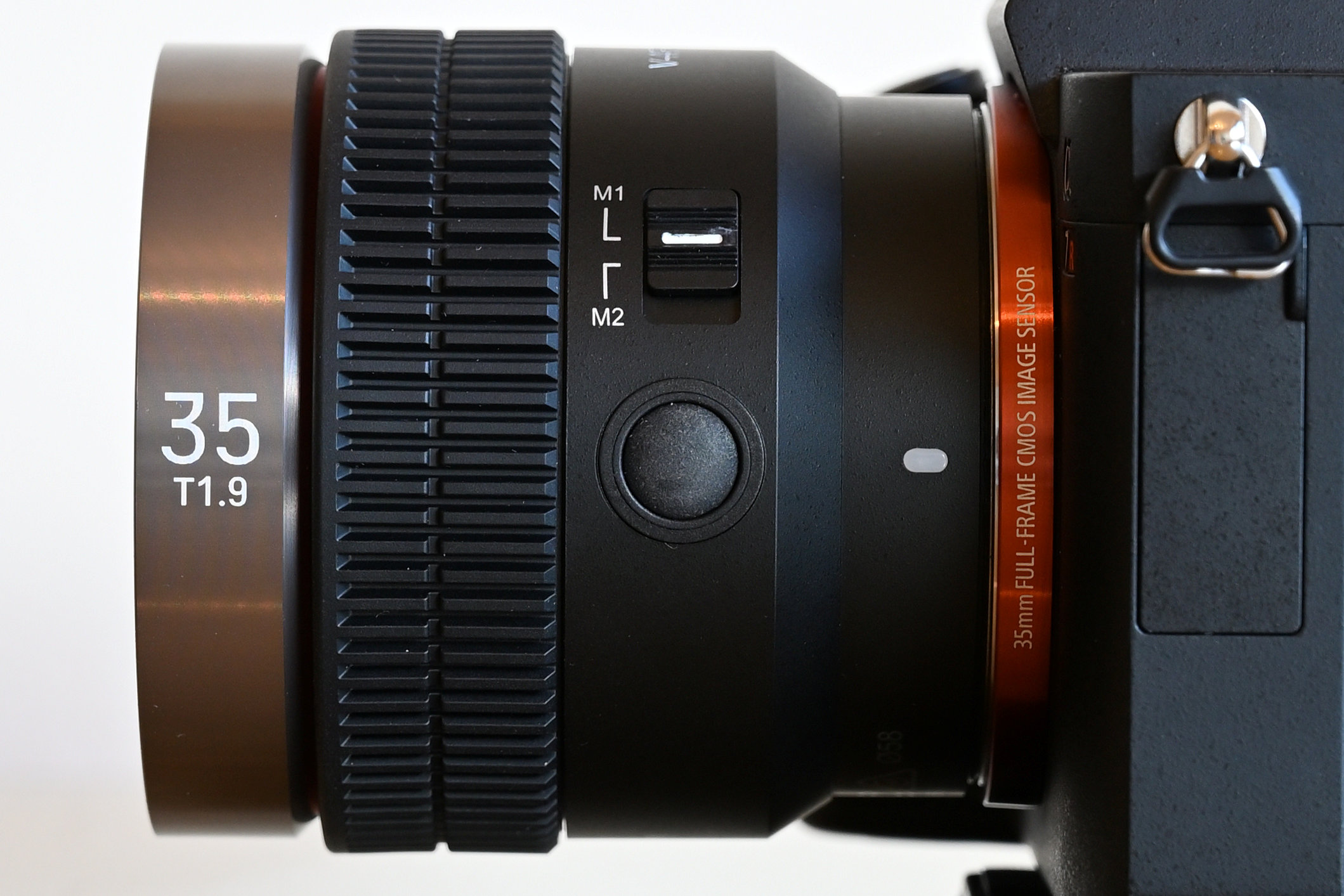
Performance
Well suited to ‘hybrid photographers’ who shoot both stills and movies, the lens delivers excellent sharpness that goes above and beyond what you’d need for video, and makes the most of high-resolution stills capture with Sony’s megapixel-rich cameras. It’s not as super-sharp as the Samyang V-AF 24mm lens at the extreme edges and corners of the frame but still very good.
In a case of swings and roundabouts, the 35mm has slightly more lateral and axial chromatic aberrations than the 24mm but the amounts are still minimal, while barrel distortion is rather lower when uncorrected in-camera. Vignetting is minimal even when shooting wide-open and resistance to ghosting and flare is very good. An important facet of the excellent all-round performance is that color rendition is standardized in all of the three Samyang V-AF lenses available thus far.
Sample images
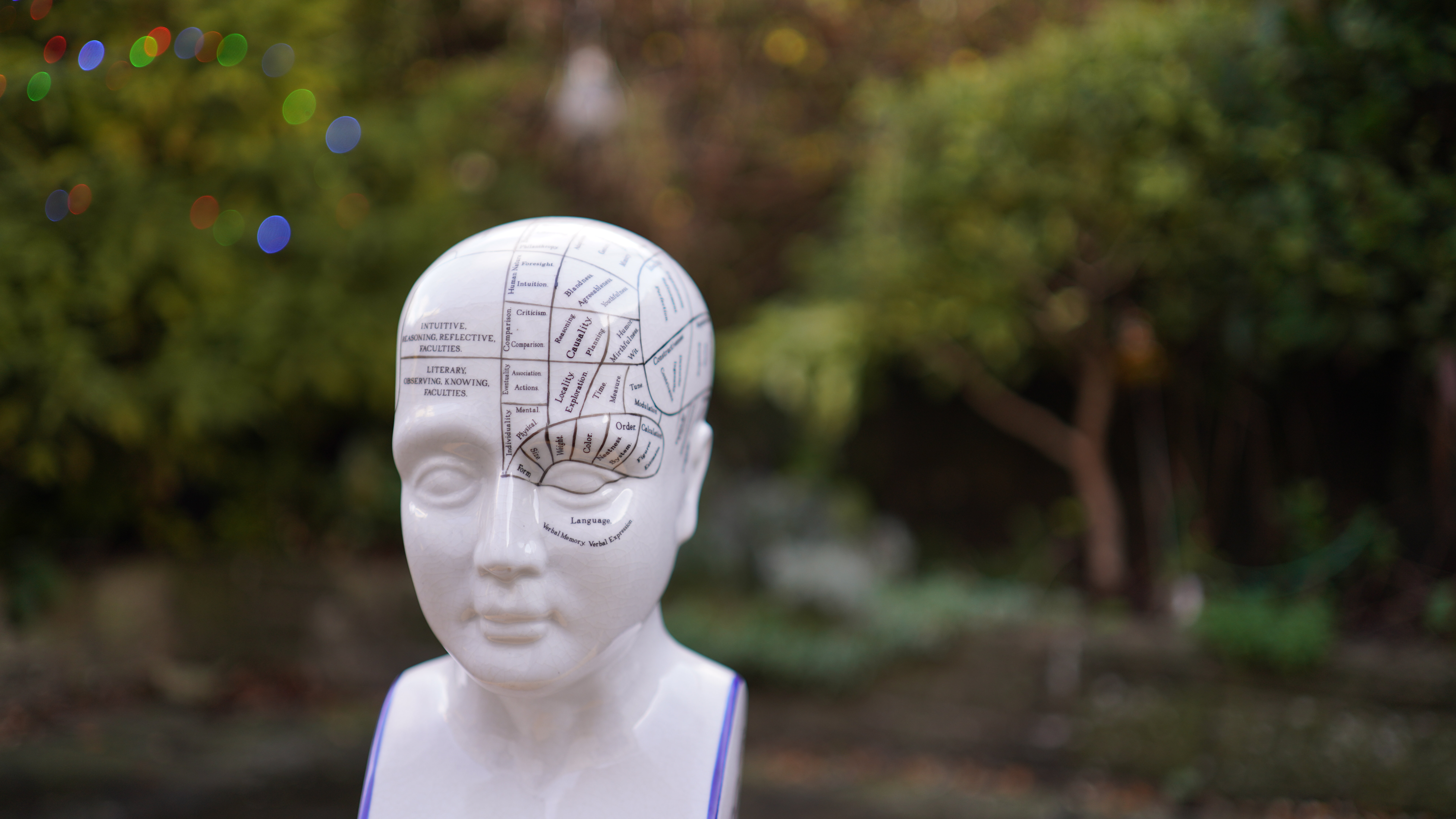



Lab results
We run a range of lab tests under controlled conditions, using the Imatest Master testing suite. Photos of test charts are taken across the range of apertures and zooms (where available), then analyzed for sharpness, distortion and chromatic aberrations.
We use Imatest SFR (spatial frequency response) charts and analysis software to plot lens resolution at the center of the image frame, corners and mid-point distances, across the range of aperture settings and, with zoom lenses, at four different focal lengths. The tests also measure distortion and color fringing (chromatic aberration).
As our Sony a7R III test body reports apertures in f/stop values rather than t/stops, this is how they are recorded in our lab graphs.
Sharpness:
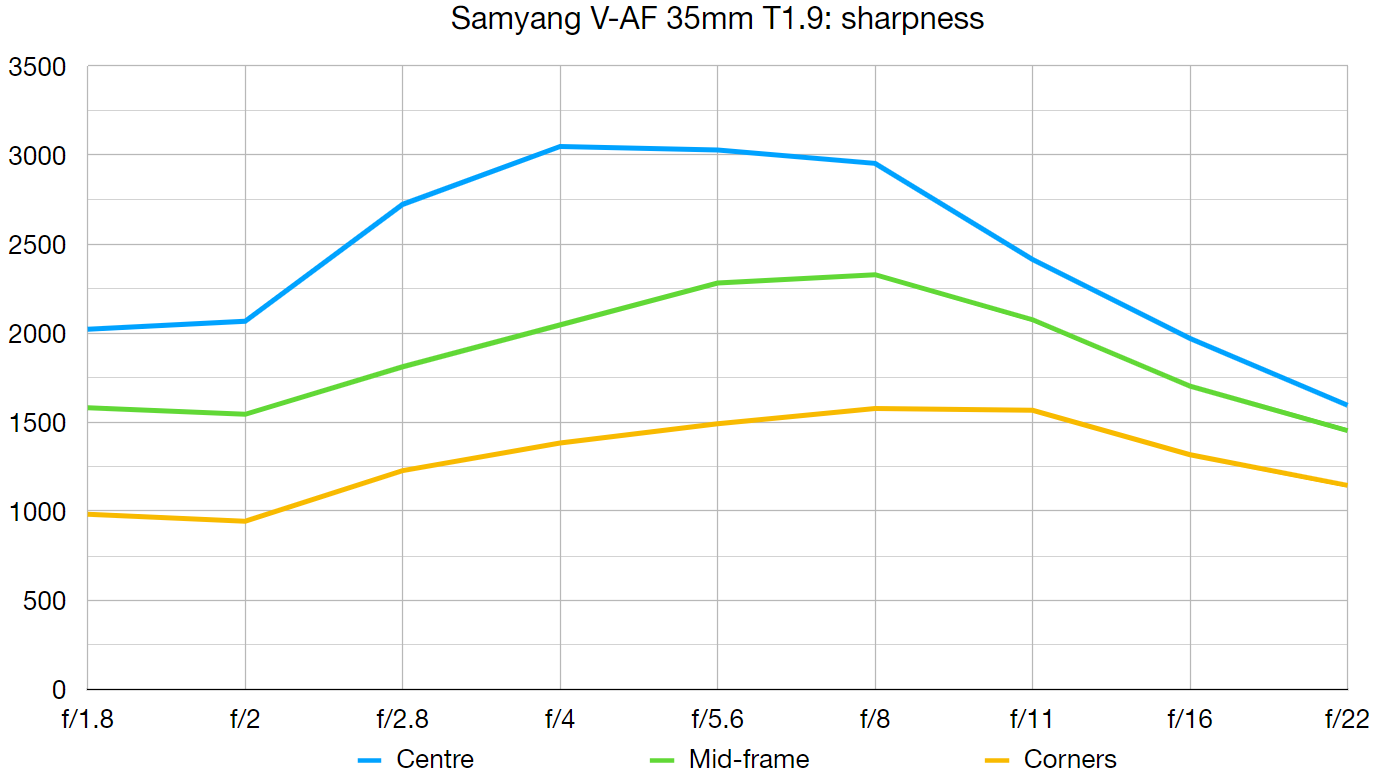
Center-sharpness is even better than with the excellent Samyang V-AF 24mm lens between f/2.8 and f/11 but it’s not quite so outstanding at the edges and corners, throughout the whole aperture range.
Fringing:
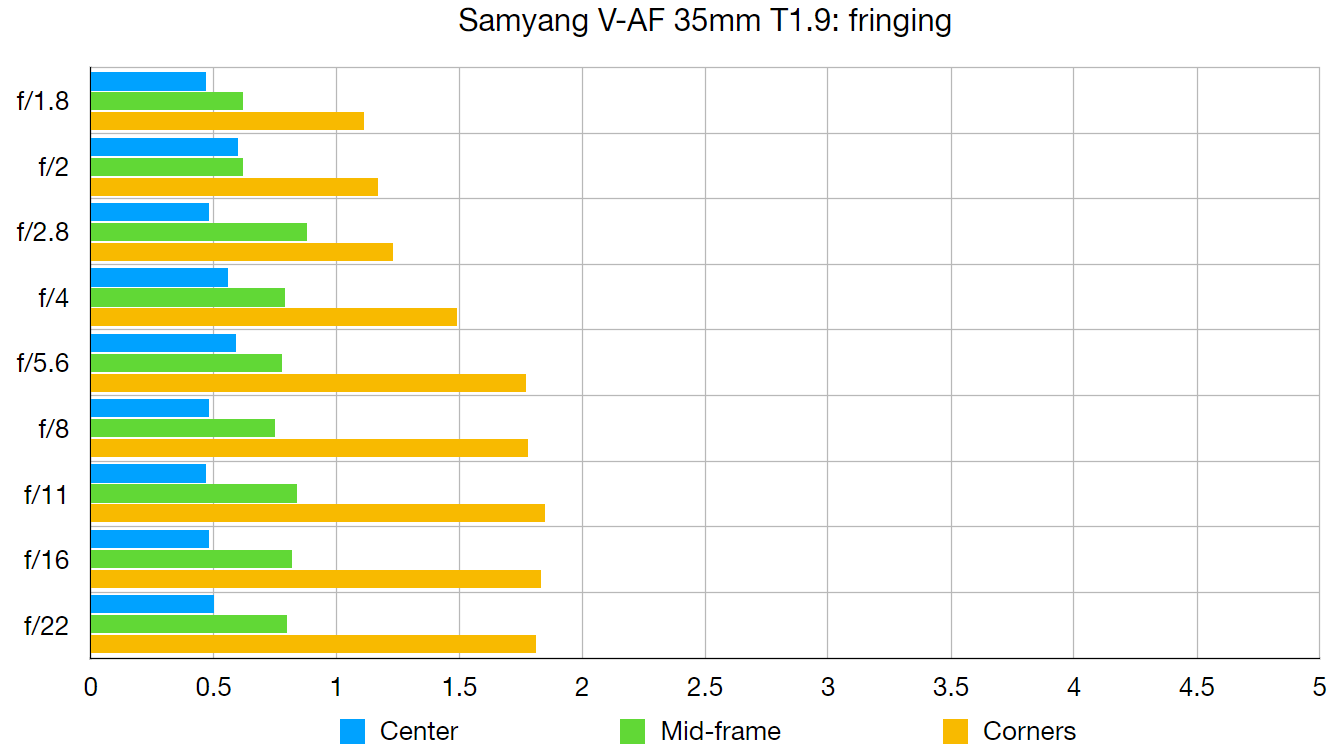
Lateral chromatic aberration is of a very low order but axial chromatic aberration (bokeh fringing) can be slightly apparent around high-contrast edges just in front of or behind the plane of focus. Even so, it’s pretty minimal.
Distortion: -1.17
There’s a touch of barrel distortion but it’s generally unnoticeable even when uncorrected, and of a lower order than with the lens’s 24mm sibling.
Verdict
Designed for movie-makers, this 35mm lens for Sony E-mount cameras is also plenty sharp enough for high-resolution stills, along with 8K video capture. It’s well-built, boasts some neat features, handles nicely and delivers excellent performance across the board, making it a bargain at the price. There are also 24mm and 75mm T1.9 lenses with identical form-factors already available, plus 20mm and 45mm primes in the pipeline.
Read more:
• Best camera lenses to get
• Best Canon lenses
• Best Nikon lenses
• Best Sony lenses
Matthew Richards is a photographer and journalist who has spent years using and reviewing all manner of photo gear. He is Digital Camera World's principal lens reviewer – and has tested more primes and zooms than most people have had hot dinners!
His expertise with equipment doesn’t end there, though. He is also an encyclopedia when it comes to all manner of cameras, camera holsters and bags, flashguns, tripods and heads, printers, papers and inks, and just about anything imaging-related.
In an earlier life he was a broadcast engineer at the BBC, as well as a former editor of PC Guide.
